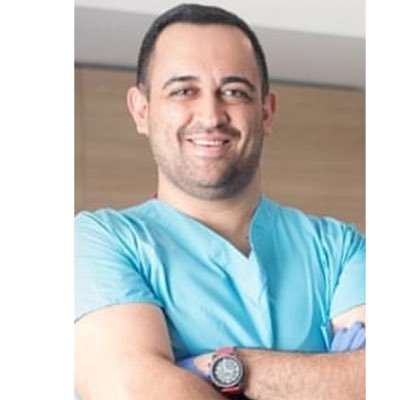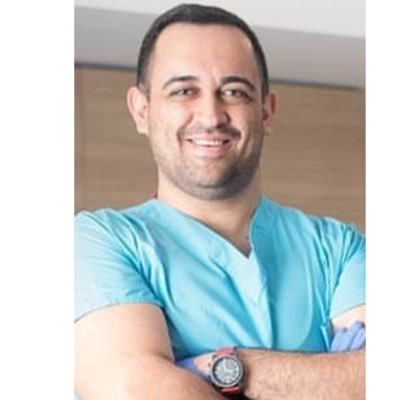Scientific Program
Keynote Session:
Title: Macrophage-derived angiogenin maintains epithelial barrier integrity to prevent colitis
Biography:
Abstract:
Statement of the Problem: Communications between macrophages and epithelium play critical roles in maintaining epithelial barrier integrity. Macrophages orchestrate intestinal epithelial cell (IEC) homeostasis by producing various mediators. Current challenges faced in inflammatory bowel disease (IBD) treatment suggest the existence of new mediators. Angiogenin (ANG) is a secreted ribonuclease and participates in cell-cell crosstalk and promotes cell growth and survival. We aimed to determine the protective role of macrophage-derived ANG in IBD. Methodology & Theoretical Orientation: We characterized ANG expression in IBD patients and in dextran sodium sulfate (DSS)-induced colitis mice. The functional role of ANG in intestinal inflammation was addressed in the experimental colitis model with wild-type, Ang-deficient or bone marrow reconstituted mice. The underlying mechanism was investigated at animal and cellular levels by administrating ANG protein and its enzymatic or receptor-binding site variant, by blocking its interaction with receptor plexin B2 (PLXNB2) or by knocking down PLXNB2.
Findings: Expression of ANG was significantly down-regulated in IBD patients and in colitis mice. Functional studies showed that deficiency of Ang in myeloid cells caused high susceptibility to DSS-induced experimental colitis and impaired epithelial barrier integrity. Mechanistically, macrophagederived ANG promoted IEC survival and proliferation through Plxnb2-mediated tRNA-derived stress-induced small RNA (tiRNA) production, and ribosomal RNA (rRNA) transcription, respectively. Importantly, treatment with recombinant ANG significantly attenuated the severity of mouse experimental colitis.
Conclusion & Significance: We have, for the first time, identified macrophage-derived ANG as a contributor in maintaining epithelial barrier integrity during intestinal inflammation, suggesting that ANG may serve as a new preventive or therapeutic target for IBD.
Title: G.I.T. - IMMUNOLOGY
Biography:
Jean Marie Poffe is Pharmacist specializing in micro-nutrition at micronutrition consultation, Cellular Nutrition
Abstract:
G.I.T. – IMMUNOLOGY of the membrane of the G.I.T and its constituents. Then we will discuss the G.I.T as an immunological barrier = the G.A.L.T. We will then pass onto the consequences of civilization diseases. ( intolerances , allergies ,M.I.C) Next we will talk about the immune response, the differentiation of lymphocytes, the sécrétion of IgA , autoimmune diseases , the interest of Prebiotics and Probios and the immunity. And for the conclusion : Capital importance of the proper functioningof the G.I.T for the well being of our patients.
Title: Transarterial chemoembolization in patients with hepatocellular carcinoma: Study of different outcomes and their predictive factors
Biography:
Abstract:
Background: Hepatocellular carcioma is one of the leading causes of cancer deaths worldwide. Transarterial chemoembolization (TACE) is a standard therapy for intermediate stage of liver cancer. However, it may have a risk of mortality and morbidity. Many factors other than radiological response determine TACE outcomes.
Aim: To analyze the outcomes after transarterial chemoembolizaton (TACE) including radiological response and liver decompensation, and their predictive factors.
Methods: Sixty two hepatocellular carcinoma patients underwent transarterial chemoembolizaton. Laboratory data, tumor criteria, and Child-Pugh score were recorded baseline and at one month post-procedure. Tumor response according to Modified Response Evaluation Criteria in Solid Tumors was evaluated.
Results: Twenty five patients (40.3%) showed complete response, 15 patients (24.2 %) showed partial response, 2 patients (3.2%) showed stable disease, and 20 patients (32.3%) showed progressive disease. Significant difference was detected in patients with different radiological responses as regards tumor criteria (size, invasion of portal vein, Barcelona Clinic Liver Cancer stage), and technique of TACE. Thirty six patients (58%) had liver decompensation after TACE. Tumor criteria, serum bilirubin, AST, INR, Model for End Stage Liver Disease, and low platelet count were detected to be predictors of as radiological response and liver decompensation after TACE.
Conclusion: Radiological response cannot be considered alone to determine the outcomes after transarterial chemoembolization. Also, tumor criteria, liver functions, and platelet count are predictors of the outcome.
Title: Efficiency of enteric-coated mini-microsphere pancreatin product on fat absorbtion and nutritional status of patients with exocrine pancreatic insufficiency due to chronic pancreatitis
Biography:
Abstract:
Introduction: Pancreatic enzyme preperations are a life-saving substitution for a pivotal physiological function of the entire organism in patients with exocrine pancreatic insufficiency. Our aim with this study is to compare efficacy of enteric-coated mini-microsphere pancreatin product (ECMMPP) in respect with regular pancreatin products status in patients with exocrine pancreatic insufficiency.
Patients and Methods: A total of 53 consecutive patients with exocrine pancreatic defficiency due to chronic pancreatitis were included the study. 24 patients were treated with regular pancreatin products(Group1), 29 patients were treated with enteric-coated minimicrosphere pancreatin product (Group 2) . Symptoms, quality of life, nutritional status, pancreatic function were assessed before and after treatment. Quality of life was assessed with The Functional Assessment of Chronic Illness Therapy (FACIT) Measurement System as a collection of health-related quality of life (HRQOL) questionnaires targeted to the management of chronic illness.
Results: Steatorrhea incidence and abdominal pain score was significantly lower in Group 2 compared with Group1 (p<0.05). Median FACIT score of Group 2 was significantly higher than Group 1 (p<0.05). Median BMI was significantly increased in Group 2 in respect to Group 1 (p<0.05).
Discussion: Exocrine pancreatic insufficiency is a serious condition which occurs in several diseases. The lack or absence of pancreatic enzymes leads to an inadequate absorption of fat, proteins, and carbohydrates, causing steatorrhoea and creathorrhea which results in abdominal discomfort, weight loss, and nutritional deficiencies. Factors as early acidic inactivation of ingested enzymes, under dosage, and patient incompliance may prevent normalisation of nutrient absorption, in particular of fat digestion. The most important aspect of the major therapy seems to be bioavailability of the product to enhance optimal absorbtion of food and especially fat. ECMMPP is shown more efffective in this study as the clinical outcome and symptomatic improvement of patient and beneficial effect especially on nutritional.
Title: The template of physical and mental health
Biography:
Abstract:
Title: The perceived level of knowledge of cervical cancer among female medical and nursing students in Bahrain
Biography:
Abstract:
Title: The impact of a virtual reality training programme on health professional knowledge, understanding and empathy
Biography:
Abstract:
Title: Second victim: Prevalence, symptoms and support perception
Biography:
He had completed his nursing BA degree in 1998 in Tel-Aviv University and public health MA degree (MPH) in 2013 in Ben-Gurion University. Now days he is studying PhD at Tel-Aviv University in the department of epidemiology and these days he is moving to stage B. Until two years ago, He worked as nursing director in internal department in Beilinson hospital. And for the past two years He has been working as coordinator of nursing research in Rabin Medical Center (Beilinson and Hasharon hospitals) and in the context of research coordinator he lead researches such Operating Room, Complexity and Variety of Quality Projects
Abstract:
BACKGROUND: Patient safety adverse events (PSEs) cause harm and suffer to patients and their families (first victim). However, the involved health care providers (HCPs) can also become victims (second victim-SV). The prevalence of SV phenomenon varies from 10.4% to 43.3%.
OBJECTIVES: Measurement the prevalence of PSE exposure and risk factors, symptoms and support perception among exposed.
METHODS: A cross-sectional study, conducted at Rabin Medical Center, Israel. The data were collected by using a validated self-reporting questionnaire, based on a convenience sampling of HCPs.
RESULTS: A total of 870 HCPs responded, 630 (70%) of them reported to be involved in PSEs. There was no difference in the prevalence of PSEs by profession / education of the HCPs. The participants without any academic education and those with a BA degree perceive less substantial responses whereas physicians assessed the most severe response to PSEs (3.8, 4.02, 4.08 p <.05, respectively).
Those who reported to be involved in PSEs tended to agree that the involvement in PSEs might cause negative responses, including feelings of guilt, anger, anxiety, shame, tiredness and sleeping difficulties. At the same time, the respondents agreed that these HCPs need an organizational support.
Participants who were involved or knew colleagues who were involved in PSEs (n = 630) assessed the risk of developing negative responses after the event higher than those who were not involved in PSEs or were not familiar with these cases (n = 151) (3.98 vs. 3.56, p <.001). These subjects also had higher need for support (4.91 vs. 4.69, p <.05). In addition, it was agreed that the existing support is insufficient, and that the hospital should invest more in supporting these HCPs.
CONCLUSIONS: SV phenomenon is widespread among all HCPs, which require centrally organized support to promote a positive safety environment.
Title: Anomaly Scan: Paradigm shift from the second to the first trimester
Biography:
Dr. Kuldeep Singh is practicing in South Delhi and is known for his skills in Ultrasound in Ob, Gyn and Infertility. He has authored 16 books on Ultrasound in Obs, Gyn and Infertility. His books have been translated into Spanish, Chineseand Portuguese. He was awarded the IMAGING SCIENCE AWARD in the AICOG in Delhi. He is presently the President of the Delhi Chapter of IFUMB. With teaching as his passion he is presently running Ultrasound Teaching Modules in Basic and Advanced Ultrasound in Obstetrics, Gynaecology and Infertility.
Abstract:
Ultrasound is an essential tool for any obstetric practise. When it started five decades ago little did we realise that this invention is a technological marvel. One could look into the presentation and the viability of the fetus. Acrania could be excluded in the third trimester and with ultrasound machines and probes getting better we could exclude that in the second trimester so called Level II scan. With high resolution probes and high frequency transvaginal probes one can now diagnose fetal abnormalities in the late first trimester. This avoids the mental trauma the mother and the family have to go through and lethal abnormalities can be terminated much earlier. Acrania, anencephaly, gross dysraphic disorganisation of the fetal spine, anterior thoracic and abdominal wall defects and gross limb abnormalities are few structural malformations that can be detected with ease as early as 11-12 weeks. Apart from structural abnormalities the index of suspicion for chromosomal abnormalities also is there with looking at the nuchal translucency, nasal bone and flow through the tricuspid valve and in the ductus venosus. Combined testing with a dual test increases the sensitivity manifold. What is most important is the knowhow of what to look and how to look in your 11-14 weeks scan.
Oral Session 1:
- Gallstones Inflammatory Bowel Disease Obesity and Diabetes Stomach and small Bowel Disorder Hemorrhoids Colorectal Disease
Oral Session 2:
Title: Angiogenin promotes colorectal cancer metastasis via tiRNA production
Biography:
Muxiong Chen, Ph.D student, biochemistry and molecular biology, Zhejiang University School of Medicine. Muxiong focuses on the new functions and mechanisms of angiogenin, a tumorigenesis and angiogenesis factor. He is now interested in the roles of angiogenin in the colorectal cancer metastasis.
Abstract:
Colorectal cancer (CRC) is one of the most common malignancies worldwide, as well as a major cause of cancer-related deaths. Despite considerable improvement in the therapeutic modalities, over 50% of CRC patients eventually developed recurrent disease and metastasis leading to death within 5 years of diagnosis. To date, the mechanisms that cause CRC metastasis are not fully understood. Angiogenin (ANG), a member of the ribonuclease A superfamily, not only activates endothelial cells to induce tumor angiogenesis, but also targets tumor cells to promote cell survival, proliferation, and/or migration. However, its clinical significance and underlying mechanism in CRC metastasis are still largely unknown. Here, we found that both RNA and protein levels of ANG were upregulated in CRC tissues. Statistical analysis indicated that higher ANG expression was strongly associated with metastasis in CRC patients. We then revealed that ANG enhanced CRC growth and metastasis both in in vitro and in vivo systems. Intriguingly, the ANG rescue assay suggested that its ribonucleolytic activity was crucial in promoting CRC metastasis. Indeed, a bunch of tRNA-derived stress-induced small RNAs (tiRNAs), produced through ANG cleavage, was enriched in both CRC tumor tissues and highly metastatic cells. Further studies confirmed that these tiRNAs promoted CRC cell migration and invasion and functioned in ANG-promoted CRC metastasis. Moreover, higher serum 5'-tiRNA-Val level was observed in CRC patients and was correlated with the serum ANG level. Taken together, we propose that a novel ANG-tiRNAs-cell migration and invasion regulatory axis promotes CRC metastasis, which might be of potential for developing new measures for CRC diagnosis, prognosis, and treatment.
Title: Macrophage-derived angiogenin maintains epithelial barrier integrity to prevent colitis
Biography:
Desen Sun, Ph.D student, biochemistry and molecular biology, Zhejiang University School of Medicine. Desen focuses on using the molecular and cellular tools and experimental animal models to study the pathogenesis of intestinal diseases. He is also interested in the roles of antibacterial peptides in maintaining the intestinal microbiota and protect against inflammatory bowel disease.
Abstract:
Statement of the Problem: Communications between macrophages and epithelium play critical roles in maintaining epithelial barrier integrity. Macrophages orchestrate intestinal epithelial cell (IEC) homeostasis by producing various mediators. Current challenges faced in inflammatory bowel disease (IBD) treatment suggest the existence of new mediators. Angiogenin (ANG) is a secreted ribonuclease and participates in cell-cell crosstalk and promote cell growth and survival. We aimed to determine the protective role of macrophage-derived ANG in IBD.
Methodology & Theoretical Orientation: We characterized ANG expression in IBD patients and in dextran sodium sulfate (DSS)-induced colitis mice. The functional role of ANG in intestinal inflammation was addressed in the experimental colitis model with wild-type, Ang-deficient or bone marrow reconstituted mice. The underlying mechanism was investigated at animal and cellular levels by administrating ANG protein and its enzymatic or receptor-binding site variant, by blocking its interaction with receptor plexin B2 (PLXNB2) or by knocking down PLXNB2.
Findings: Expression of ANG was significantly down-regulated in IBD patients and in colitis mice. Functional studies showed that deficiency of Ang in myeloid cells caused high susceptibility to DSS-induced experimental colitis and impaired epithelial barrier integrity. Mechanistically, macrophage-derived ANG promoted IEC survival and proliferation through Plxnb2-mediated tRNA-derived stress-induced small RNA (tiRNA) production, and ribosomal RNA (rRNA) transcription, respectively. Importantly, treatment with recombinant ANG significantly attenuated the severity of mouse experimental colitis.
Conclusion & Significance: We have, for the first time, identified macrophage-derived ANG as a contributor in maintaining epithelial barrier integrity during intestinal inflammation, suggesting that ANG may serve as a new preventive or therapeutic target for IBD.
Title: Efficiency of Enteric-Coated Mini-Microsphere Pancreatin product on fat absorbtion and nutritional status of patients with exocrine pancreatic insufficiency due to chronic pancreatitis
Biography:
Alp Yildiz is a specialized general surgeon on colorectal and gastro-intestinal surgical pathologies. He has a huge passion in improving digestive health and wellbeing. His main approach in surgery has always been effectivity and novelty. He is still serving one of the the largest hospitals in the country which have the largest number and greatest variety of specialists and researchers working with.
Abstract:
Title: Breast Cancer Prediction using different Support Vector Machine (SVM) Kernels
Biography:
Dr. Bright Keswani is working as Associate Professor at Suresh Gyan Vihar University, Jaipur. He has a long standing of teaching at graduate and postgraduate level for more than 15 years at various Institutions. He has been taught many courses in M.Tech, MCA, M.Sc., PGDCA, MBA and BCA, BBA Programs in past years. Apart from regular Teaching, Research and Administrative work, he is associated with Software Industry and providing Consultancy on ‘Project Planning and Designing’ to the team of Software Professionals. To his credit there are a number of research articles which have appeared in leading Journals; some of which have been presented in International/National Conferences and included in Conference Proceedings, leading International/National level Magazines, and in-house Journals of corporate sector. Beside this, he is associated as Member/Senior Member/Global Member and Life Member of various National/International Societies (Technical) including ‘Computer Society of India’, CSTA. Also, he is working as Editor-In-Chief for Suresh Gyan Vihar University-Journal of Engineering & Technology, ‘Reviewer’ for various International Journals, such of Computer Application in Engineering, Technology and Science (IJ-CA-ETS) and as a member of the Editorial Board of International Journal of Computer Applications in Engineering, Technology and Sciences (IJ-CA-ETS). As a prolific writer in the arena of Computer Sciences and Information Technology, he penned down a number of books on Operating System (ISBN No: 13/978-81-8496-324-3), E-Banking and Security Transactions (ISBN No: 978-93-80311-07-4), Software Engineering (ISBN No: 81-88870-88-9) and (ISBN No: 13/978-85-8496-312-0), Elementary Computer Applications (ISBN No: 13/978-81-8496-061-7), Introduction to Computer Science (ISBN No: 13/978-81-8496-264-2) and Programming in Visual Basic. He has authored ‘Self Learning Material’ of Computer Science for Virdhaman Mahaveer Open University, Kota and Bhoj University, Madhya Pradesh, Suresh Gyan Vihar University, Jaipur etc. Being as ‘Organizing Secretary’ and ‘Convener’ he has been organized various Conferences, Seminars and Workshops at the Department of Computer Applications, Suresh Gyan Vihar University.
Abstract:
Statement of the Problem: Cancer is one of the most dangerous as well as heterogeneous disease. Breast Cancer is the most common forms of Cancer among women. Mammograms, Breast ultrasound, etc. are some of the medical test, commonly prescribed by the doctors for the diagnosis of breast cancer. But they are not always appropriate at the beginning stages of breast cancer. These routine checkups are prescribed to every woman after crossing certain age limit and thus exposed to radiation as side effects of it causes increased risk of cancer. Therefore, there is a need of an alternate solution other than costly and risky medical tests. This paper presents the use of machine learning algorithms for easy reorganization of breast cancer. A model is hereby proposed using different kernels of Support Vector Machine for the prediction of breast cancer tumor.
Title: TransAbdominal Sonography of the Stomach & Duodenum
Biography:
Abstract:
Title: TransAbdominal Sonography of the Small & Large Intestines
Biography:
Abstract:
Keynote Session:
Title: Chagas disease, therapeutic and conduct in sigmoid colonic volvulus
Biography:
Abstract:
Volvulus is a conditions in which sigmoid is twisted on its mesentery causing acute colonic obstruction, for a volvulus to occur, sigmoid must be mobile and have sufficient length (megasygma) to rotate around a relatively narrow and fixed mesenteric base. This condition is present in Chagas disease, Endemic problem in Bolivia, transmited by the parasite Trypanosoma Cruzi. Volvulus of sigmoid is most frequent cause of colonic obstructions in patients in Cochabamba – Bolivia, and one of the most frequently causes of consult in emergency rooms, clinic presentation is typical, Crampy abdominal pain, distention, diminished stool output, and nausea and vomiting, progression of pain according the mesenteric vasculature may be compromised by mechanical torsion of the volvulus around the mesenteric total colectomy.
Title: Angiogenin promotes colorectal cancer metastasis via tiRNA production
Biography:
Abstract:
Colorectal cancer (CRC) is one of the most common malignancies worldwide, as well as a major cause of cancer-related deaths. Despite considerable improvement in the therapeutic modalities, over 50% of CRC patients eventually developed recurrent disease and metastasis leading to death within 5 years of diagnosis. To date, the mechanisms that cause CRC metastasis are not fully understood. Angiogenin (ANG), a member of the ribonuclease A superfamily, not only activates endothelial cells to induce tumor angiogenesis, but also targets tumor cells to promote cell survival, proliferation, and/or migration. However, its clinical significance and underlying mechanism in CRC metastasis are still largely unknown. Here, we found that both RNA and protein levels of ANG were upregulated in CRC tissues. Statistical analysis indicated that higher ANG expression was strongly associated with metastasis in CRC patients. We then revealed that ANG enhanced CRC growth and metastasis both in in vitro and in vivo systems. Intriguingly, the ANG rescue assay suggested that its ribonucleolytic activity was crucial in promoting CRC metastasis. Indeed, a bunch of tRNA-derived stress-induced small RNAs (tiRNAs), produced through ANG cleavage, was enriched in both CRC tumor tissues and highly metastatic cells. Further studies confirmed that these tiRNAs promoted CRC cell migration and invasion and functioned in ANG-promoted CRC metastasis. Moreover, higher serum 5'-tiRNA-Val level was observed in CRC patients and was correlated with the serum ANG level. Taken together, we propose that a novel ANG-tiRNAs-cell migration and invasion regulatory axis promotes CRC metastasis, which might be of potential for developing new measures for CRC diagnosis, prognosis, and treatment.
Title: Pathophysiology and management of Esophageal Varices in current practice
Biography:
Abstract:
Title: Rate of Helicobacter pylori eradication by levofloxacin based and clarithromycin based sequential therapy regimens at tertiary care hospital
Biography:
Ghulam Mujtaba Dahri is a resident in Gastroenterology at LIAQUAT NATIONAL HOSPITAL & MEDICAL COLLEGE.
Abstract:
Objective: The aim of the current study is to find the rate of H. pylori eradication by Levofloxacin based and Clarithromycin based sequential therapy regimens at tertiary care hospital
Study design: Study was conducted on out patients at Department of Gastroenterology, Liaquat National Hospital, Karachi.
Duration of study: Was six months from 23th Oct 2016 to 23th Apr 2017 .
Subject & methods: All in patients who fulfilled the inclusion criteria in the Department of Gastroenterology, Liaquat National Hospital, Karachi were included in the study. After taking informed written consent history, clinical examination, upper GI endoscopy was performed levofolxacin and clarithromycin based sequential H. pylori eradication was given. Eradication was checked by performing stool for H. pylori eradication. All the collected information was entered in the prescribed Performa.
Results: A total 254 patients were included in our study. 106 (41.7%) were female and 148 (58.2%) were male. Mean duration of dyspepsia was 5.03±1.24 months. Eradication rate was 95% with levofloxacin based sequential therapy and 85% with clarithromycin based regime.
Conclusion: The eradication rate with levofloxacin sequential therapy was better than clarithromycin based regime, could be due to high resistance in our population so it is suggested to prefer levofloxacin based regime in our day to day practice.
Title: Challenges of nursing
Biography:
Ramanjeet Singh is studying in class 11 in Birla Vidya Niketan. He work for a few NGO's and He has started an initiative himself by the name Helper's Help.It primarily focusseson the ragpickers and they can be made less vulnerable to diseases. Helper's Help highlights the adverse conditions in which these people are forced to live in inspite of helping others and proving to be an asset for the society.Helper's Help carries out regular drives to distribute gloves as well as masks which acts as a shield.
Abstract:
Nursing basically is an art of providing to the sick and instead of being worshipped has come under constant scrutiny and is being forced to face many challenges. Challenges like regional differences have penetrated through and has gradually led to the development of income inequalities. Not only this, the nurses on a day to day basis are exposed to various diseases, pathogens as well as flu germs which affects their health adversely. Inspite of their gruelling schedules they are forced to work for longer hours and also for more shifts that to without any incentives. Often this leads to fatigue, lack of sleep and gradual development of a negative atmosphere. Societies have been very harsh on the women from the start but this problem has become more acute in the case of nurses as they have to face the violent behavior not only from their fellow workers but also from the patients. A lot of times due to shortage of staff the nurses are pressurized to work more which leads to burnout and as it is their job is extremely taxing. These challenges leave them dissatisfied with their jobs. This leads to less and less people being attracted and opting for this profession.
Title: An exploration of Indian nurses motivation to nurse : a matter of service or economic gain and social mobility
Biography:
Michelle currently works a City University of London as the Programme Director: Mentorship : Supporting & Assessing Learning in Practice Settings and Practice Lead for Adult nursing students. Michelle has previously worked as a Senior Lecturer at Buckinghamshire New University and Kingston University & St Georges University, London. This followed a successful nursing career as a District Nursing Sister and as an Intermediate Care Nurse. Michelle has taught a range of subjects latterly with a focus on Public Health, Culture & Diversity in Healthcare, Professional Nursing and Management of Long term conditions.Michelle has an MSc in Medical Anthropology and has a keen interest in culture, expressions of illness and how nurses cope with this. Michelle is currently in the final phase of her PhD exploring the experiences of Indian nurses coming to the UK to study and work.Michelle has an MSc Medical Anthropology; BSc Community Nursing (District Nurse); PGCE; Nurse Prescriber; Diploma In Nursing (Adult); BA (Hons) Business Studies
Abstract:
The aim of this paper is to explore the context of the decision making process to become a nurse in India for both the male and female nurses, examining the differences between the genders. Nursing itself has changed there are different way of performing nursing which has led in part to the reduction of stigma associated with nursing. Nursing is associated with much more positive prospects in terms of career, travel and earning potential. This has attracted more men to the profession and led to more non-Christian nurses taking up the profession. Nursing at first glance appears ungendered as with other professional roles however both men and women show how gender can be fluid and adaptable within nursing. Two distinct explanations exist for what it means to be a nurse one feminine and the other masculine. For the female nurses the profession is one that encompasses service to others and duty a way to honour ones religion, community and family. Nursing is closely aligned with the aptitudes of a mother that is to care and nurture. The masculine explanation of nursing is concerned with career and social development, one linked to economic gain and status with little mention of care as a motivation to nurse. Through my ethnographic work I revealed clear differences and contrasting views of the male and female nurse’s career aspirations. The discussion with the nurses demonstrates how they fulfil they gender roles but also offer insights in to how nursing can support changes in gender roles, such as the women becoming the main breadwinner and financially secure. The male nurse, by expressing an economic motivation to become a nurse, would be able to fulfil his expected role as a son and husband; the primary contributor to the family’s finances.
Title: Evaluation of the implementation process of e-roistering system with frontline staff in an acute hospital in Ireland
Biography:
Paul Slater is a lecturer in statistics at Ulster University Northern Ireland. He is a Psychologist and a lecturer in statistics. He has fifteen years’ experience as a researcher in the areas of Psychometric testing of instruments, Anxiety Disorders, Assessment tool development, Organisational Culture research, older people Assessment, Person-centred Practice and Suicide. He is also advisory editor for the International Journal of Older People Nursing and Physiotherapy Practice and Research
Abstract:
In recent years, e-rostering systems, have been implemented by an ever-increasing number of health care organisations around the world, however, there is a dearth of empirical and policy research and few independent evaluations of e-Rostering solutions in the literature. The aim of the study was to evaluate the implementation of the e-rostering system in an acute hospital setting among front line staff (nurses, nurse manager and health care assistants).A mixed methods exploratory research design was used to gauge the views and attitudes of a population of front line staff in one acute hospital settings following implementation of an e-rostering system. An extensive literature review and six focus groups with frontline staff (n=34) informed the development of the items; an expert panel (n=8) reviewed the items prior to distribution. A cross sectional survey was used to gauge frontline staff views using an 18-itemed tool. The tool examined five broad constructs; assessment of needs, benefits of the e-rostering system, organisational support, satisfaction with the implementation process, training issues by profession. Full ethical approval was sought and gained.
Results: A response rate of 31.8% (n=203) was achieved. The tool was found to have acceptable psychometric properties. Most respondents felt confident about using the e-Rostering system, reported that the system was easy to use and that they were supported during implementation. Respondents were uncertain about the benefits of using the system for patients and staff in providing effective skill mix, staffing levels and ensuring patient safety. Positive aspects of the system identified were: accessibility, schedule in advance and personnel monitoring. The size of the unit and age of respondent had a significant impact on construct scores.
Conclusions: Frontline staff experienced mixed opinions regarding the implementation of e-rostering. The findings highlight contextual factors that may assist with successful implementation in the future.

Sharadha Ramesh
Assess the Effectiveness of Yoga on Depression among Women in Post menopause at selected rural areas of Tamilnadu, South IndiaTitle: Symbiosis International Deemed University, India.
Biography:
Sharadha Ramesh working as Director Symbiosis College of Nursing, Symbiosis International University, Pune, is a PhD, Faculty of Nursing with total experience of 32 years. She has completed 35 independent research works. He awards include Sigma Theta Tau – Eta Pi award, USA best research paper award during the International Nurses Conference by Omayal Achi College of Nursing/ Saskatchewan University, Canada. For Academic Excellence and Outstanding contribution to Research received award from the International Centre for Collaborative Research and Alumni Association Omayal Achi College of Nursing Chennai. Received the best research paper award in Worldwide Nursing Conference held at Singapore in July 2017. She has presented a total of 146 Papers as Podium Presentations. She has organized more than 250 community service camps, multispecialty health camps, blood donation camps, services during disasters such as tsunami, flood relief camps and post cyclone camps at Chennai
Abstract:
INTRODUCTION: Depression is one of the oldest and most common psychiatric illnesses. The disease has been described as early as 1500 BC. The word depression is used in a variety of ways. It can refer to a sign, symptom, syndrome, emotional state, reaction, disease or clinical entity. According to WHO (2011) 450 million people in the world currently suffer from some form of mental and brain disorders. 121 million suffer from depression and it is estimated that more than 80,000 die by suicide each year. Projected figures from 1990 to 2020 suggest that proportion of the global burden of all diseases accounted by mental and brain disorder could increase to 15% from the present 8.5%. Established psychiatric diagnosis from developing countries like India and Taiwan is only 1.5%.
NEED FOR THE STUDY: Depression carries a considerable degree of morbidity and mortality. It has become a common condition due to stressful life style and life events. Depression is a preventable problem if identified early and treated appropriately. Symptoms are rarely expressed by individuals making it difficult to identify the morbidity in the community. The disease is a chronic disorder and is frequently found among women population. The common age group affected ranges from 30 to 50 years. It is commonly found among people deprived of social, economical and educational development and it is one of the most important predictor of suicidal behavior in many people.General studies on psychiatric disorders in the last 2 to 3 decades identified depression to be more prevalent among female population due to poverty, lack of education, over whelming population, unequal distribution of resources are some of the common risk factors for mental disorders and are more severe among women. Hence mental disorders among women especially in India cannot be separated from social, cultural and economic issues. The women have always been pressured by the family members and also due to self imposed objectives. Women are unable to develop deep relationship and feel hopeless and empty when these objectives are not met. When these happen to a woman who is not well educated receives less support and guidance from the social network, aggravated with life events women end up with depression. The researcher with the vast experience has found many rural women suffer silently in the community.
A study to assess the effectiveness of Yoga on depression among post menopausal women residing in village of Tamilnadu, South India.
Title: Community health workers stigmatizing attitudes in regards of persons with a mental disorder: a challenge of maternal mental health in a selected health centre in Rwanda
Biography:
Vedaste Baziga working as Lecturer in University of Rwanda, College of Medicine and Health Sciences, School of Nursing and Midwifery, in the Department of Mental Health Nursing.He is experienced teacher/ Nurse Educator and specialized in Mental Health Nursing. He is actively involved in academic activities and has worked as practitioner and supervisor in the Psychiatric Referral Hospital and District Hospitals. Also, He is involved in research activities having many research projects (3 already published, and another he accepted for publication and 2 remaining in the process of data analysis). In addition, He participates in community outreach activities such as mobile clinic in partnership with different NGOs and public institutions etc. To increase my competences, knowledge and skills, He had furthermore, participated in Continuous Professional Development (CPD) in different areas.
Abstract:
Mental disorders (MD) is significantly contributing to global burden of disease and this is the fourth leading cause of global disability. To overcome this concern, the World Health Organization recommended integration of mental health care into general health care facilities and conjointly with nurses in Health Centres, community Health Workers (CHWs) have an important role in the implementation of WHO recommendation about the integration. The objectives of this study are as follows: To describe stereotypical attitudes amongst CHWs regarding persons with a mental disorder and to explore relationships between specific socio-demographic factors (age, gender, level of education, experience and familiarity) and CHWs’ stigmatizing attitudes towards persons with mental disorders in health center of a selected district hospital in Rwanda.
A quantitative, descriptive cross sectional study was conducted among CHWs operating under health centre of a selected District hospital in Rwanda and a self-report questionnaire that included person four demographic variables and two sections such as level of contact and the Community Attitudes towards Mental Illness - Swedish version. The self-report questionnaire was distributed to available CHWs (n=138) and data analysis were performed using the SPSS version 20. This study revealed that participants held negative stereotypes towards persons with MD. Association test revealed more negatives stereotypes towards MD amongst lower educated CHWs, younger CHWs and less experienced CHWs. Also, correlation test revealed that increases in LOC correlates with decrease in score in some CAMIs, subscales and total score respectively.















